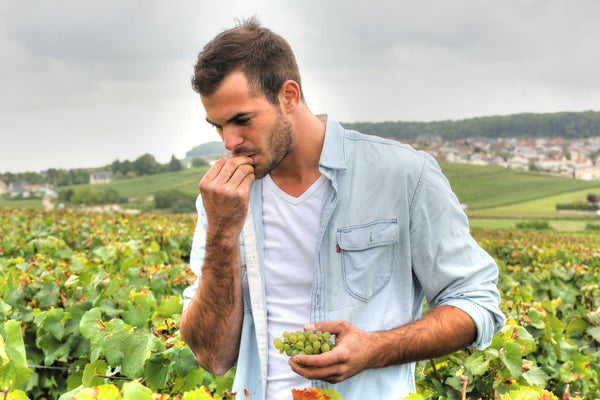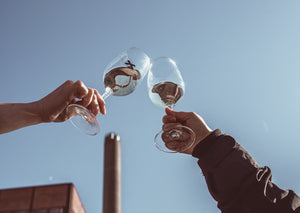
Champagne Dhondt-Grellet
The Dhondt-Grellet champagne estate began in the village of Flavigny near Avize in 1986, when the Belgian-born Éric Dhondt and his Champagne wife Édith Grellet decided to stop selling their grapes to champagne houses and started making wines that express the terroir of the northern Côte des Blancs themselves. The couple's son Adrien, born in 1991, who has been involved in the operation of the farm since 2012, continues to take care of the family's orchards and make wines. From a young age, Adrien knew he wanted to work with wine, so following in his parents' footsteps was a natural fit for him. In 2017, Alice joined her brother in running the farm's operations and especially office tasks. Adrien has also tripled the family's original 2 hectares of vineyards in the villages of Cramant and Cuis, thereby increasing wine production. Currently, the selections also include bottles from one village and one vineyard, which testify to Chardonnay's phenomenal ability to reflect its terroir.
Adrien's biggest role models include Burgundy and Champagne growers such as Coche-Dury, Vincent Dancer, Jean-Yves Bizot and Anselme Selosse. According to the masters' teachings, Adrien also believes in living soil and calls himself a peasant farmer. Although the farm does not have an organic certificate for the time being, no synthetic chemicals are used in the nurseries, but they rely on plowing between the vines and using self-made compost. Plant extracts are also used to improve the vitality of nurseries. The vines are cut short and their yield is kept very moderate so that the grapes produced are ripe and concentrated.
In the cellar, Adrien relies on spontaneous fermentations and uses all his wines in oak barrels. The juice is allowed to settle for only 6 hours and the use of sulfur dioxide to protect the wines is minimal. The cellar is neither air-conditioned nor cooled, so the wines are made at the mercy of natural weather conditions. The basic wines mature on the lees for eight months before the second fermentation, and are not stabilized, clarified or filtered. Malolactic fermentation is also not prevented, but it happens if the vintage allows it. The treasure of the family's cellar is a reserve wine warehouse maintained using the solera method, stretching back to the year the farm was founded, of which a third is used each year for the production of that vintage. Along with the annual wine addition, the lees of the fresh wine are also added to the vessel to bring multidimensionality to the reserve wine. Depending on the barrel needs of the cellar, the reserve wine is sometimes stored in barrels, sometimes in steel tanks.
Adrien's style is very rich and vinous. He picks his grapes when they are very ripe and limits the harvest to collect highly concentrated grapes. Often, basic wines reach up to 11.8-12% alcohol content, and taillé is also often used in wines. The wines are not allowed to settle before fermentation. Dosages are moderate, usually around 1-2 g/l. When tasting his wine during recorking, Adrien trusts his instincts to choose the right level of sweetness.
The farm's annual production is now 55,000 bottles, but with the addition of two new plots, the total production can be increased to 60,000 bottles.
Come and join us in creating a better wine culture
We at Viinitie believe that Finland is ready for a better wine culture. People are thirsty for quality, responsibility and stories in more and more glasses. That's why we want to be even more torchbearers of this cultural change and make better wines available to everyone.
Join the Viinitie Grand Crew community and you are involved in making a better wine culture.
Powered by Shopify © 2025, Viinitie Oy

